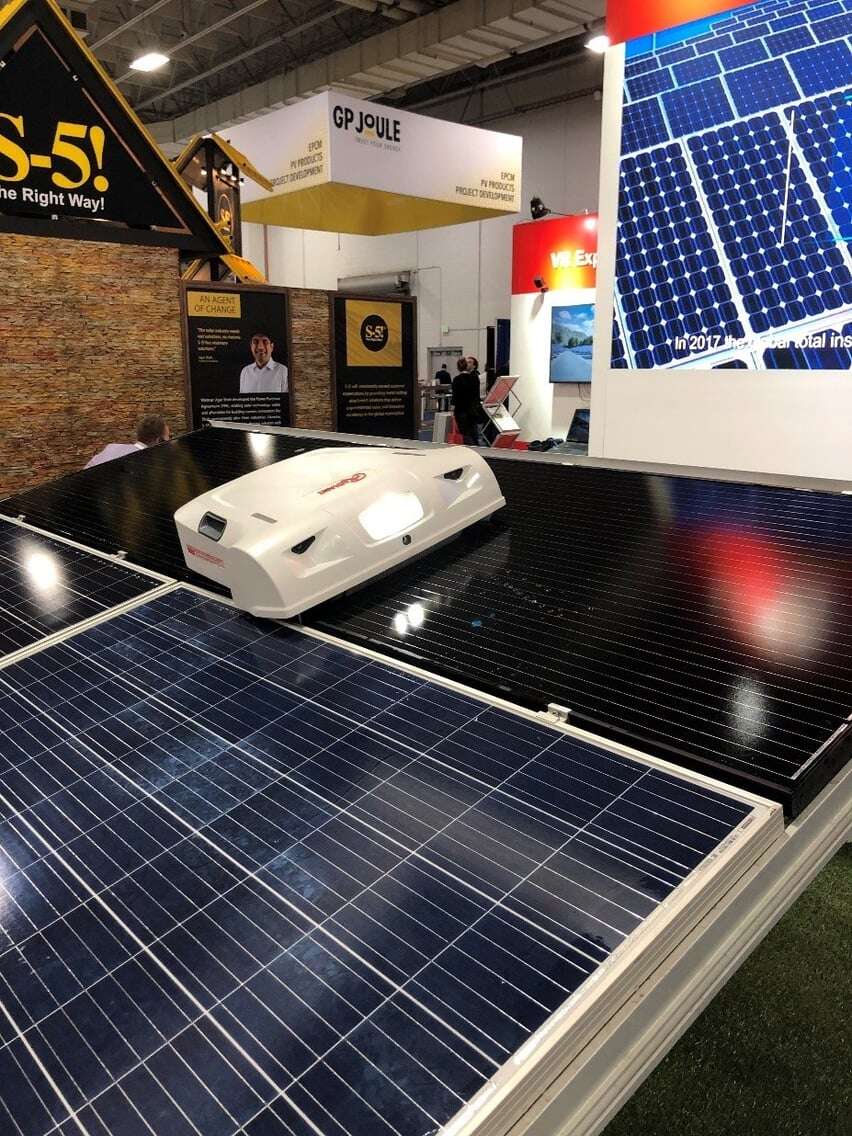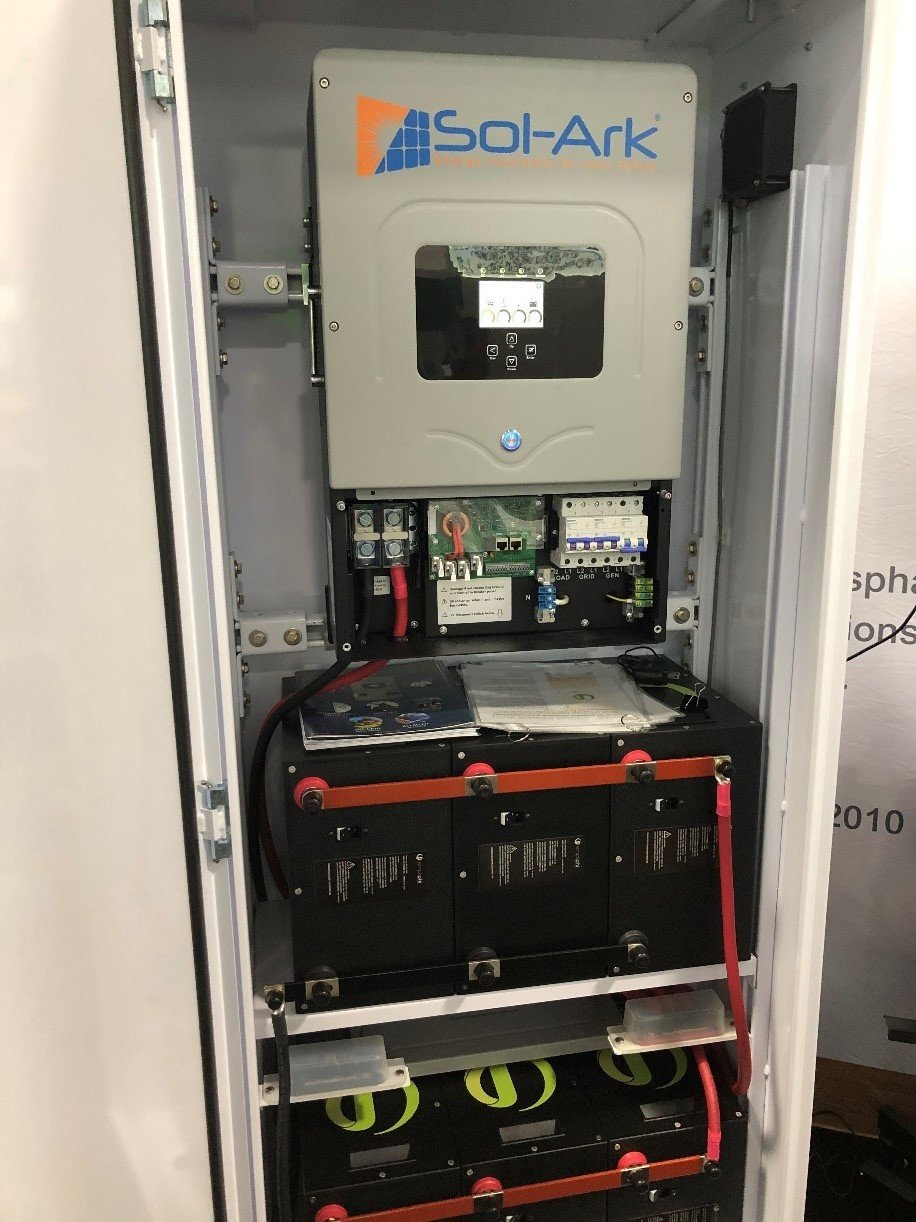I was lucky enough to attend this year’s Solar Power / Energy-Storage International Conference in Salt Lake City. I have heard that this is the biggest and best of the conferences related to renewable energy and it did not disappoint. This event is now the largest energy conference in North America. Not renewable energy conference, the largest energy conference of any type. Larger than PowerGen and Electric Power. It’s even larger even than Greenbuild, the premier sustainability conference.
 In addition to technical sessions covering multiple tracks, the event had a trade expo with more than 700 exhibitors. It was easily the largest exhibition I’d ever seen. True to the event’s name, it was indeed international with Chinese, European, Korean, and Japanese companies well represented. There were also numerous participants and presenters from the Middle East, Africa, and India.
In addition to technical sessions covering multiple tracks, the event had a trade expo with more than 700 exhibitors. It was easily the largest exhibition I’d ever seen. True to the event’s name, it was indeed international with Chinese, European, Korean, and Japanese companies well represented. There were also numerous participants and presenters from the Middle East, Africa, and India.
Many of the exhibitors at the exposition were smaller companies providing ancillary services related to support, installation, and monitoring. To me, this is where the creativity was most visible as each had their own device or strategy to help the industry reduce costs and provide more resilient energy solutions.
Overall, I’d say most of the buzz at the conference was surrounding Battery Energy Storage Systems (BESS). There were literally hundreds of exhibitors selling batteries and associated controls. As discussed multiple times in technical sessions, energy storage today is where solar power was about 10 years ago. It is acknowledged there will be starts, stops, and setbacks – sometimes fiery, unfortunately – but there are so many potential benefits offered by storage that deployment is ramping-up quickly. The combination of solar and storage will profoundly change our power grid, and it will also change the way we design our buildings and communities.
There was far too much information presented at this great event to summarize in a single post. Instead, I’ve listed below just three things I took away from technical sessions. I’m happy to share more information with anyone who’s interested, or just geek-out on solar and storage.
As a final thought, it’s clear solar PV is now a huge industry employing millions of people worldwide[1]. More than 130 GW of new PV installations are expected by the end of 2019 representing a growth of over 25% in total installed capacity.[2] Energy storage systems and grid-control technologies are seeing similarly-rapid growth rates. All of this is exciting to those of us committed to de-carbonizing our energy infrastructure and mitigating the effects of climate change. This momentum needs to continue and, judging by the scale of this event and the enthusiasm of the participants, I’m encouraged that it will.
1. Codes and Guidance for Battery Energy Storage (BESS) are Evolving
Although battery energy storage systems are increasingly installed, the risk of fire is real and must be managed. (There are some dramatic videos of thermal runaway incidents on the internet.) Codes and standards have been slow to catch up making consistent design and implementation a struggle for designers and code officials. The past two years, however, have seen an increase in guidance which should improve safety and help the industry overall. Listed below are a few examples of this trend.
- NEC 2017 and 2020 have revised and expanded Article 706, Energy Storage Systems.
- The International Fire Code IFC 2018 has new language related to BESS.
- NFPA 855, Standard for the Installation of Stationary Energy Storage Systems, was published in September of 2019.
- UL 1973, Standard for Batteries for Stationary, Vehicle Auxiliary Power, and Light Electric Rail (LER), Energy Storage Systems was released in 2018.
- UL 9540, Standard for Energy Storage Systems and Equipment, released in 2016.
- UL 9540A, Test Method for Evaluating Thermal Runaway Fire Propagation in Battery Energy Storage Systems was released in 2018.
2. Virtual Power Plants
Utilities are beginning to realize that they don’t necessarily need giant PV / BESS farms to improve grid cleanliness and resilience. In multiple states, electric utilities are rolling out virtual power plants (VPPs). Solar PV and a relatively small amount of battery energy storage are installed for individual customers. The utility helps pay for this and in return, gets the ability to seamlessly move these customers to battery power for short duration, thus managing the utility’s overall load profile. With new smart inverters the utilities can adjust power factor and provide frequency stabilization which when aggregated over thousands of customers, can make a meaningful difference. Additionally, the customers gain the ability to have ride-through power during short-duration outages – by far the most common type of disruption. VPPs promise to provide more benefits to utilities at far less costs than new, gas-fired peaker plants.
3. Electric Vehicles
Electric Vehicle charging infrastructure was discussed frequently. Electric cars are expected to be less expensive than internal combustion vehicles within five years. Fleet vehicles such as buses and smaller delivery trucks have reportedly already crossed that threshold. This means there will be significantly increased needs for charging infrastructure starting now. Any new buildings we’re designing should include provisions for electric vehicle service equipment (EVSE). For cars, this means, at a minimum, we should be planning for additional feeders and conduits to parking areas. If our customers are likely to have fleet vehicles such as maintenance trucks or buses, we should expect the need for fast charging equipment ranging up to a MW. This will likely require increased electrical infrastructure.

Figure 1 - About 10% of the Exhibit Space

Figure 2 – Robots for solar panels!

Figure 3 - Integrated Battery Storage with Inverter > 20 kWh
[1] https://www.irena.org/newsroom/pressreleases/2019/Jun/11-Million-People-Employed-in-Renewable-Energy-Worldwide-in-2018
[2] http://www.fi-powerweb.com/Renewable-Energy.html

